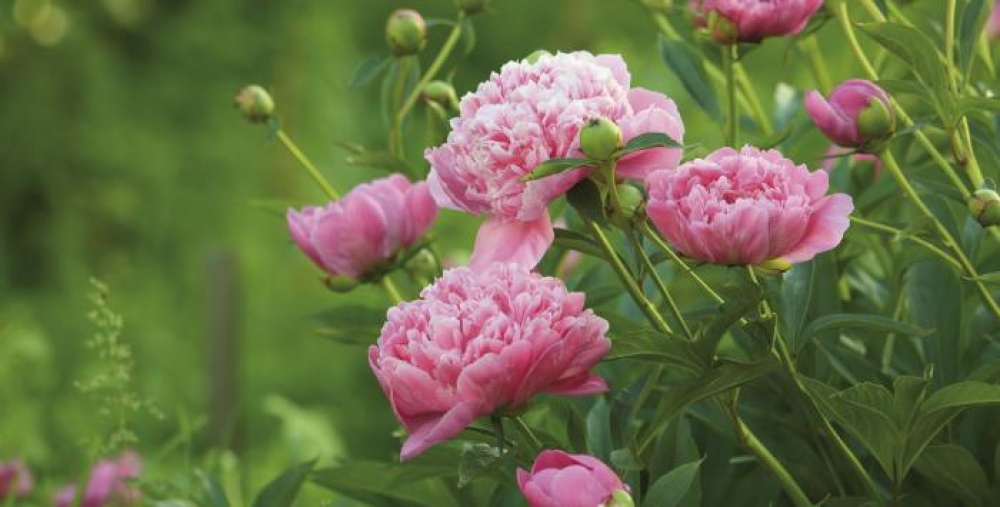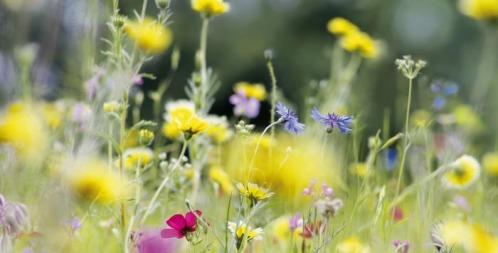How to Plant Peonies

Peonies never fail to command our attention with their feminine charm
With petals that flutter like a ballerina’s tutu in the wind, it’s little wonder peonies are a staple in every summer bouquet, beloved by brides everywhere. Handfuls of marshmallow pinks look elegant tucked into a bouquet, while neat unopened buds of magenta and cerise look striking against lush greenery in centrepieces and floral displays.
With petals that flutter like a ballerina’s tutu in the wind, it’s little wonder peonies are a staple in every summer bouquet, beloved by brides everywhere. Handfuls of marshmallow pinks look elegant tucked into a bouquet, while neat unopened buds of magenta and cerise look striking against lush greenery in centrepieces and floral displays.
Ranging from soft whites and candy floss pinks, to deep fuchsia, and even shades of yellow and coral; the Claire De Lune variety in particular is a stunning hybrid with pale lemon petals that blooms early summer, peonies are like old friends, utterly dependable and a joy to greet as they bloom.
Their flamboyant, floppy heads and intricate design command our attention and make a wonderful addition to any garden. Bursting into bloom from as early as an unseasonably warm April, these deceptively delicate plants are not as high maintenance as they look. Though they prefer a sunny spot and rich fertile soil, peonies will grow in alkaline soil and tolerate slight shade. Peonies are also very hardy, so do well in cold weather (particularly useful given our typically British climate). As a perennial, they will provide almost a lifetime of flowers both indoors and out, and only get better with age; vivid pinks fade in the sun to creamy pastels, providing invaluable colour throughout the season.
Planting
Initial soil preparation is key to producing a healthy root system and ensuring an eye-catching display. Peonies are best planted in autumn, but can be planted in early spring. It’s important to prepare the ground with organic matter wand good compost or well-rotted manure to ensure these picture-perfect plants are given the best start in life. Herbaceous peonies differ from wood-stemmed tree peonies as they die back every winter. Herbaceous peonies have thick roots and are usually sold either as bare root plants or as container grown. It’s best to purchase the bare root variety from a reputable nursery as these have three to four growth buds per plant so will produce flowering buds more quickly, usually within a season or two. Dig a hole approximately 12-18 inches deep and 18 inches wide to give the root system space, with the cultivars planted in groups of three to five to ensure an abundance of blooms.
Caring for Peonies
Herbaceous peonies can be grown in containers but aren’t suited for long-term container cultivation as the roots need plenty of space to develop. Relatively drought tolerant once established, peonies do require regular watering when rain is lacking during the first year to aid establishment, especially if they have been planted in spring or slightly later. Good draining properties are essential as the roots tend to rot in poorly drained soil. If planted in rich fertile soil, the peonies should not require a lot of regular feeding, although feeding with a balanced general fertiliser away from the crown during spring will perk up them up.
These flamboyant flowers can grow up to four feet high, and tend to flop when their heads are battered by heavy rainfall or strong winds. It’s best to stake the plant and add hoops or supports in early spring as the leaves begin to emerge. One of the best ways to support peonies is to set four bamboo stakes into the ground around the plant and weave garden twine from one side to the other in a crisscross pattern to create a support structure to keep the blooms upright.
Peonies should be divided in autumn when leaves have wilted and turned yellow. Remove the foliage and lift the clump carefully, gently removing any excess soil to expose the roots and growth buds. Remove the sections of the crown that have at least three dormant growth buds with a sharp knife. The buds should then be replanted five centimetres below the ground. Peonies make stunning flower arrangements around the home, so be sure to make the most of these beheaded beauties by placing them in water in a tea cup or bowl for a pretty centrepiece. The blooms should last around a week to ten days once the buds open.
Problem Areas
Peonies will fail to bloom for a number of reasons, most often because they have been planted too deep, or if they suffer from excess nitrogen, inadequate sunlight, phosphorous or potassium deficiencies, competition from roots of nearby plants and attacks from certain insects or diseases. These include peony wilt, which causes the dieback of foliage and flowers, peony ring spot virus which causes yellow rings on the foliage and honey fungus.
Best In Show
The five best herbaceous peony varieties
- Bowl of Beauty. These gently-cupped cultivars have bright cerise flowers and a creamy centre, making them an instant focal point in any garden.
- Duchesse de Nemours. With their spotless ivory flowers, lemony green base and unforgettable scent, this variety is easy to grow and a plentiful producer. Slightly shorter than other varieties, they’re a great choice for a windy garden.
- Noemi Demay. The Noemi Demay is an ancient variety dating back to 1867 but its delicate soft pink petals and heady sweet scent make it a firm favourite.
- Monsieur Jules Elie. With petals that gently tuck together, this variety is a late bloomer and distinctive for its light pink and lilac colouring, meaning you can extend the peony season past mid-summer.
- Solange. Deservedly one of the most popular varieties with its bouquet of pale salmon pink petals and creamy centre, this plump peony can last until early autumn.




